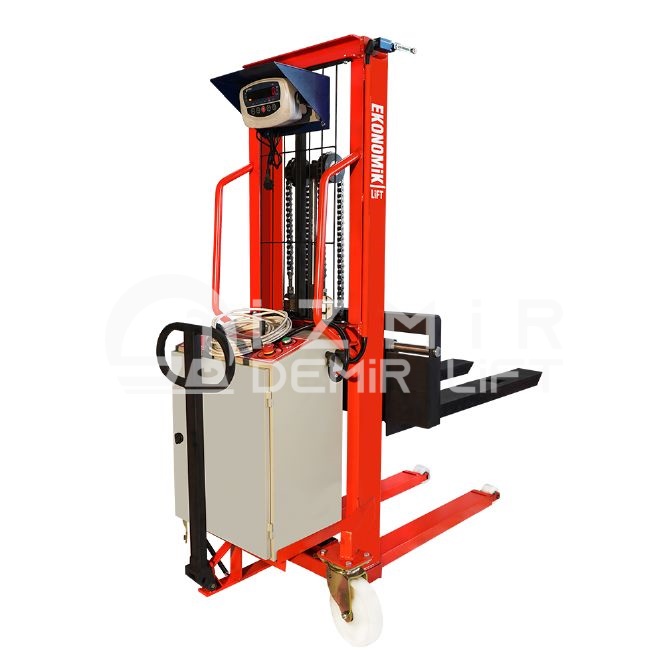
In the warehousing, logistics, and production sectors, efficiency, speed, and safety are paramount. One of the most important pieces of equipment that combines these three elements is undoubtedly a stacking machine. There are different types of stacking machines on the market, including manual, fully battery-powered, and semi-electric.
What is a Semi-Electric Stacker and How Does It Work?
A semi-electric stacker, as the name suggests, has a hybrid operating principle. In these machines, lifting and lowering loads—the most power-intensive and operator-tiring operations—is performed using an electric motor and hydraulic pump. By simply pressing a button on the control panel, the operator can safely and effortlessly place or lower pallets weighing hundreds of pounds, even tons, onto shelves.
The horizontal movement of the machine, that is, its forward and backward movement, is achieved manually by human power. The operator moves the machine by pushing or pulling. This design eliminates the need for the complex traction motor and electronic systems of fully battery-powered machines, reducing both the machine's cost and simplifying maintenance. In short, semi-electric stackers are a smart solution that combines the simplicity of manual pallet trucks with the lifting power of fully battery-powered stackers.
Advantages of Semi-Electric Stackers
Disadvantages and Considerations for Semi-Electric Stackers
As with any equipment, semi-electric stackers have some limitations. The most significant disadvantage is that horizontal movement is manual. This makes them less suitable for very large warehouses or operations requiring continuous transport of loads over long distances. If your operation frequently moves pallets from one end of the warehouse to the other, a fully battery-powered model may be more efficient to prevent operator fatigue.
Furthermore, these machines generally perform best on flat, smooth surfaces. Manual pushing on slopes or uneven surfaces can be difficult and pose a safety risk.
Is It the Right Choice for Your Business?
A semi-electric stacker is an excellent price/performance solution, especially for businesses where loads are frequently lifted and lowered but not transported long distances. Any business looking to significantly increase productivity and safety while keeping investment costs low should definitely consider Izmir Demir Lift's 100% domestically produced semi-electric stacker models.